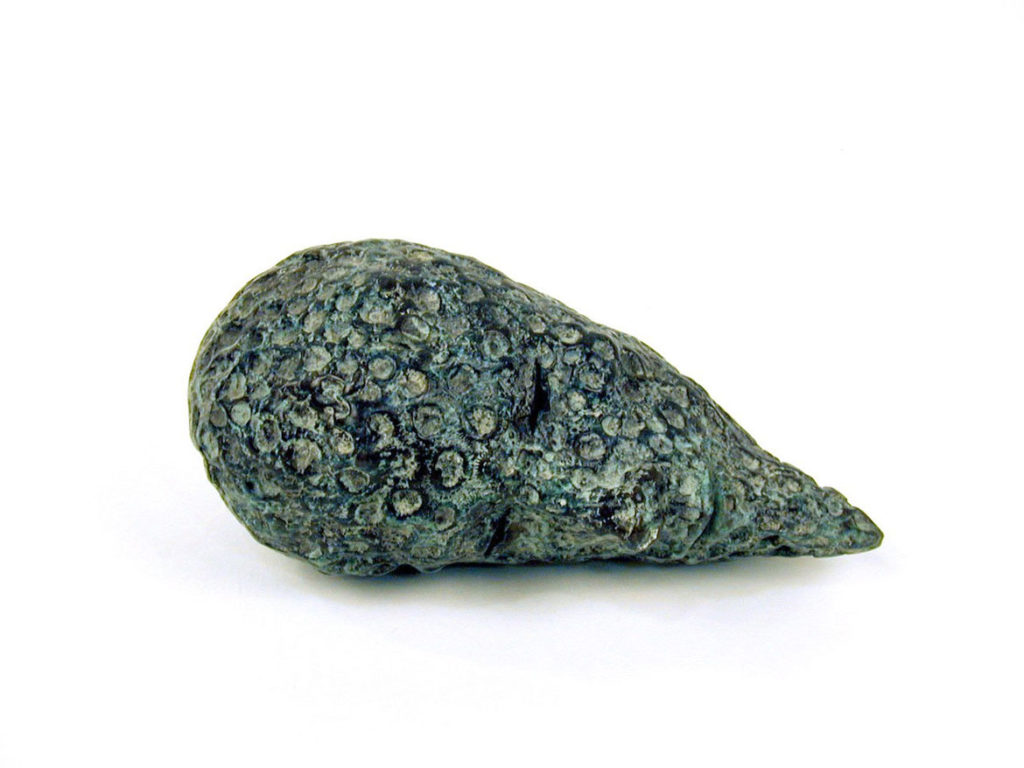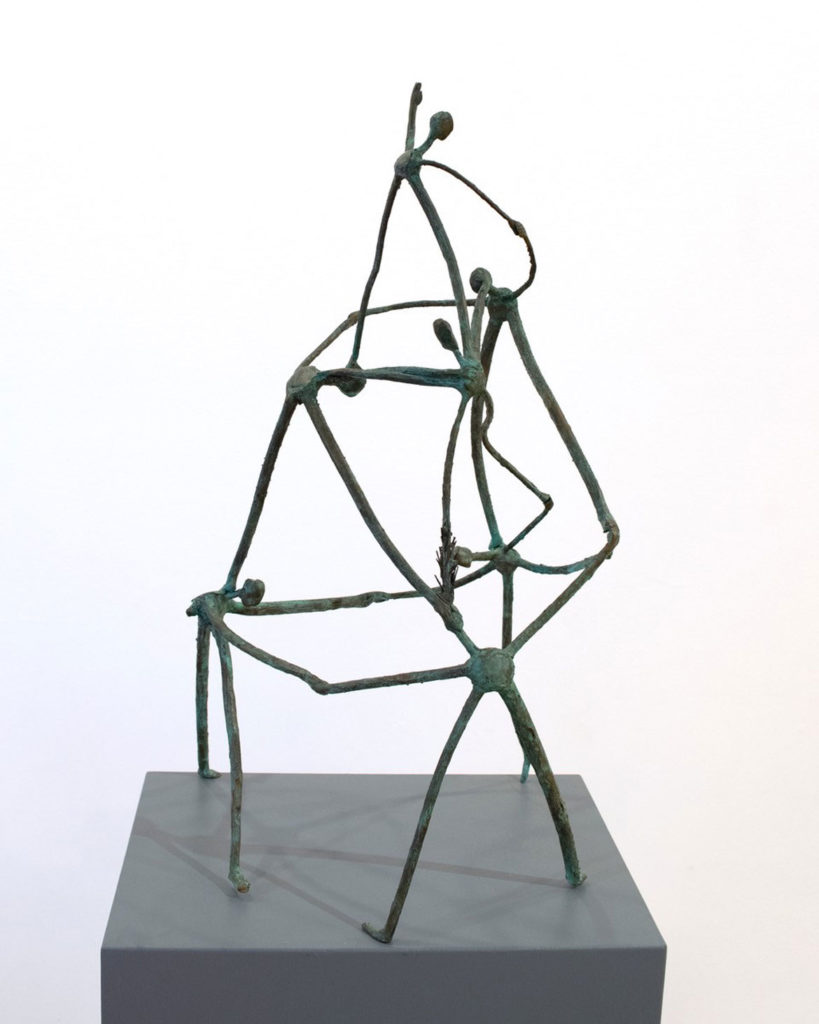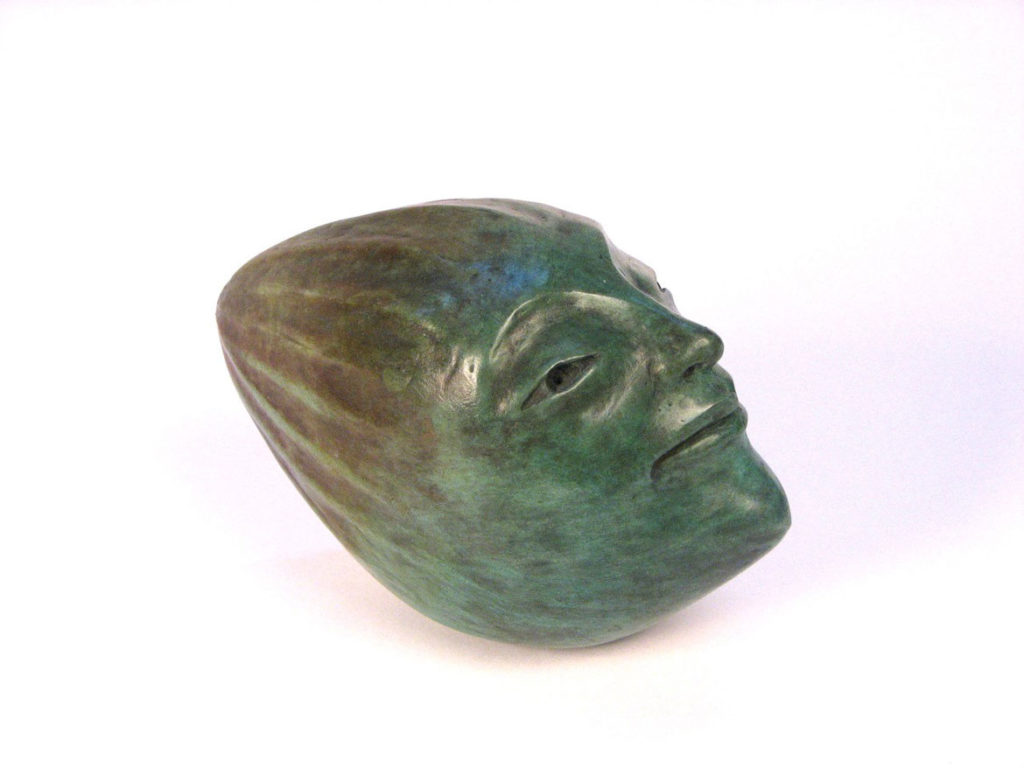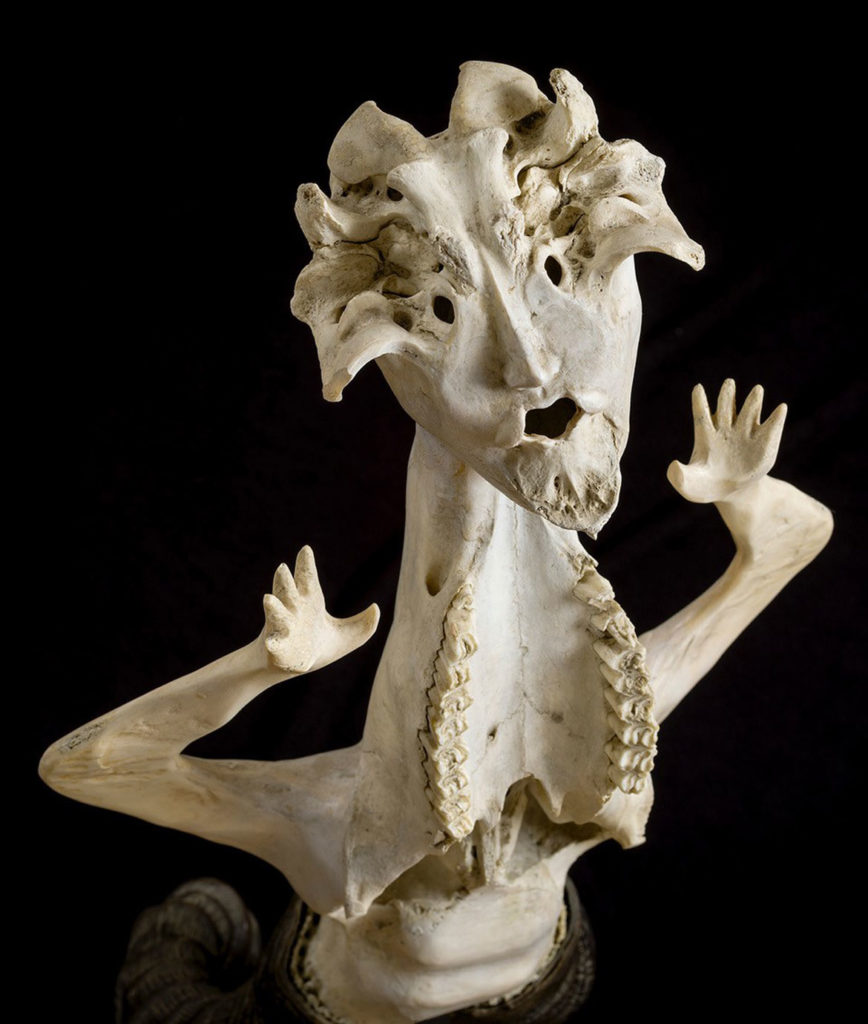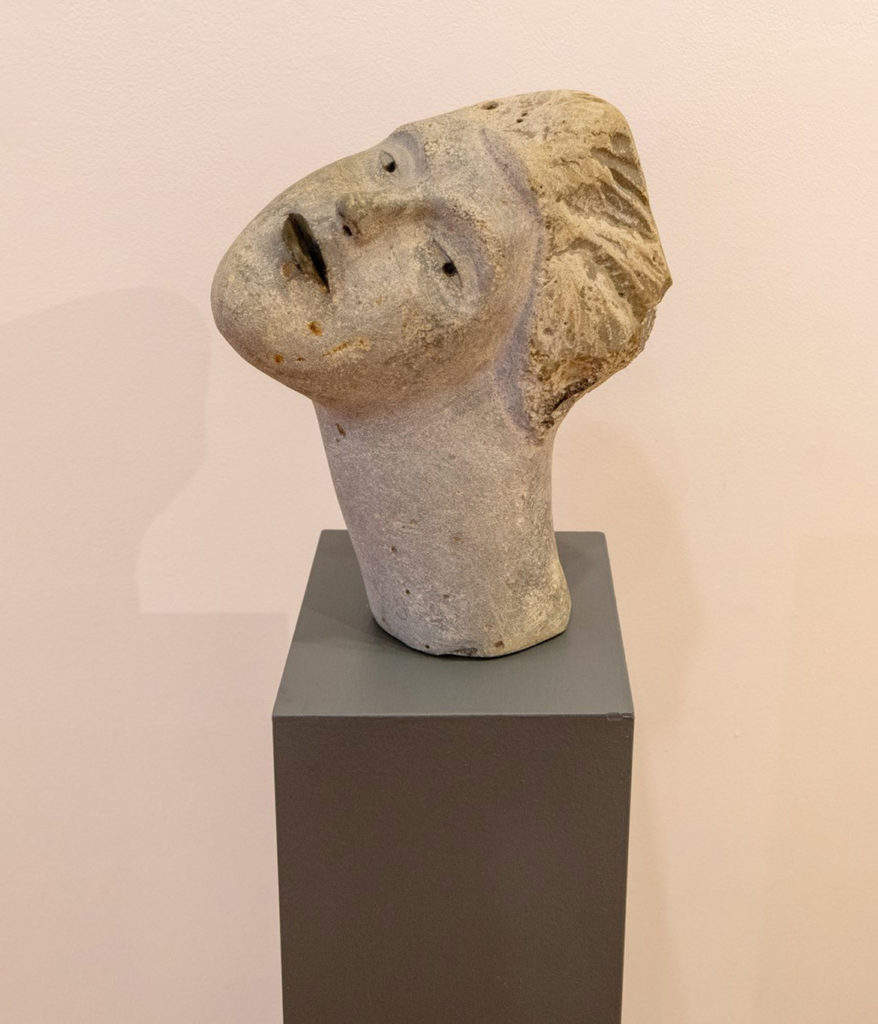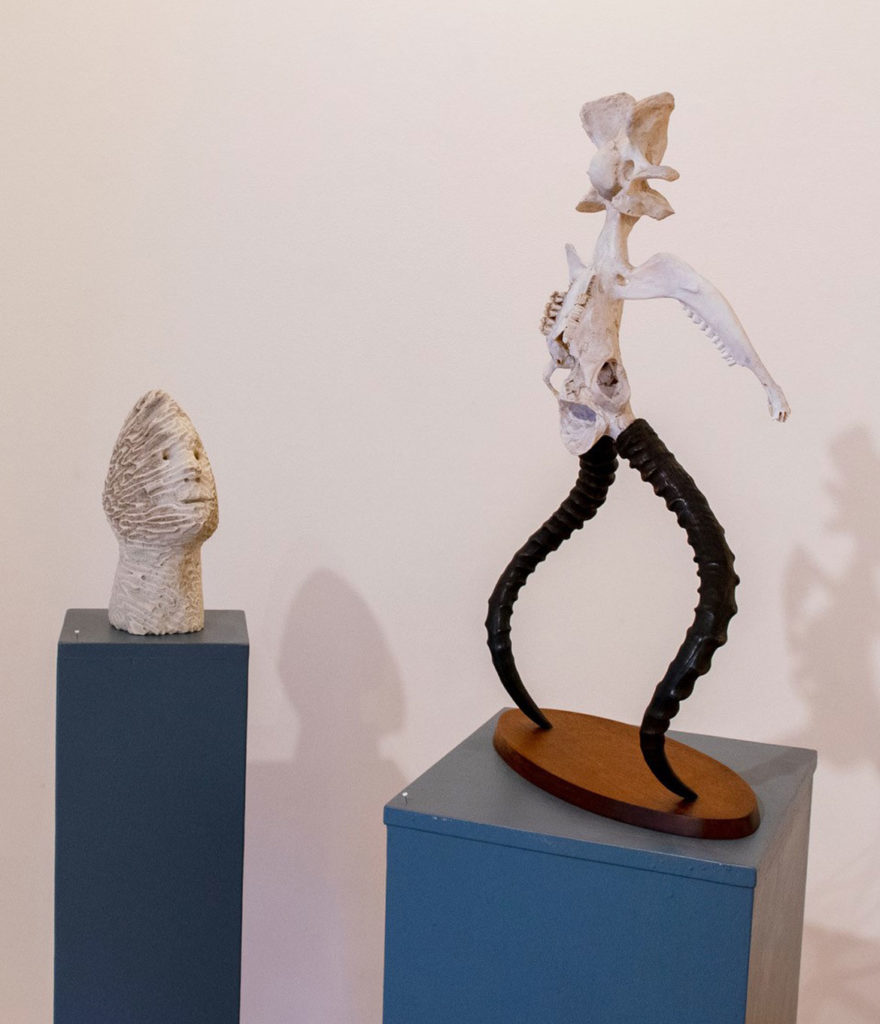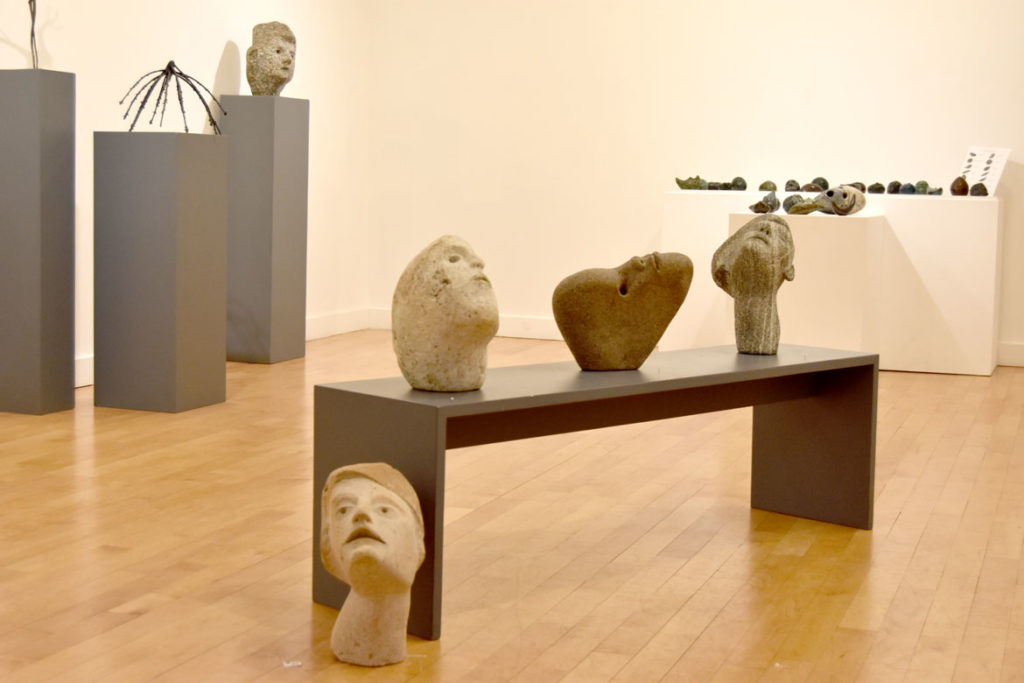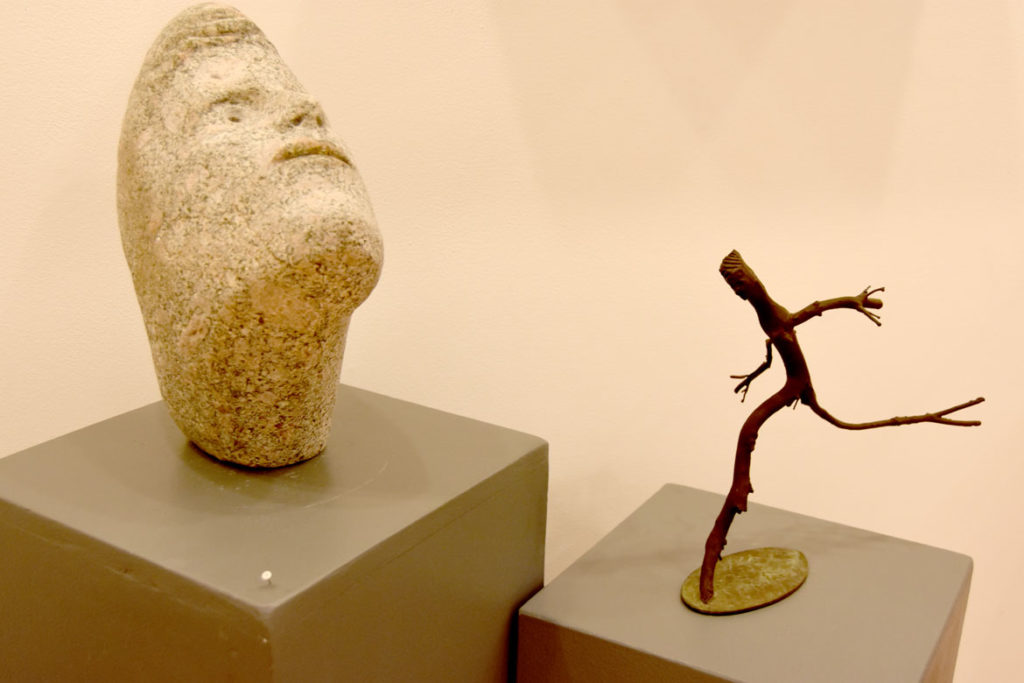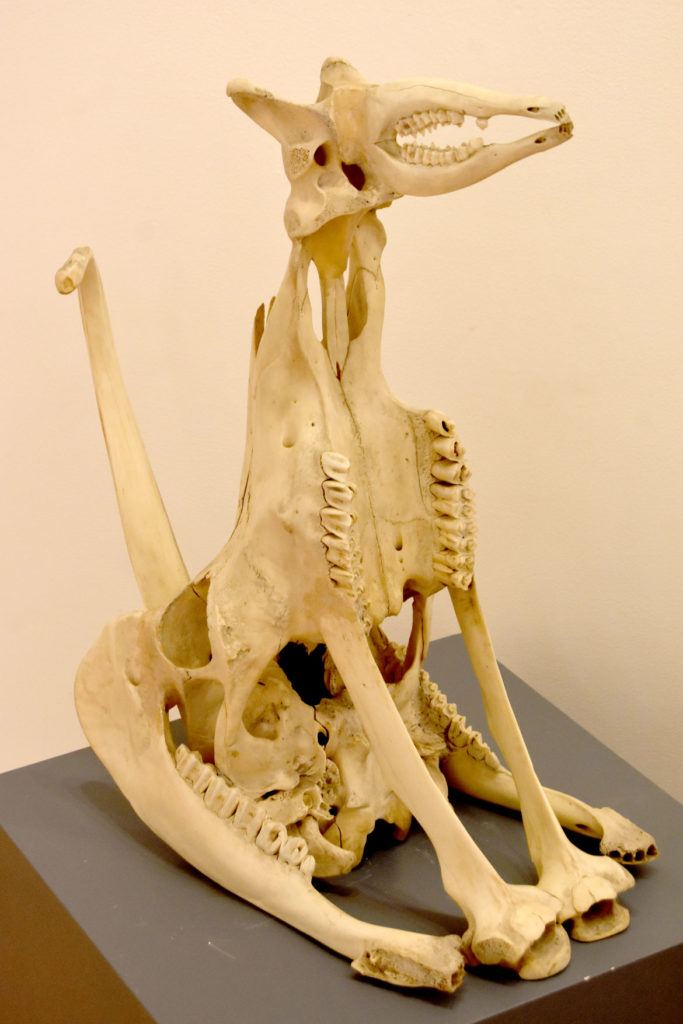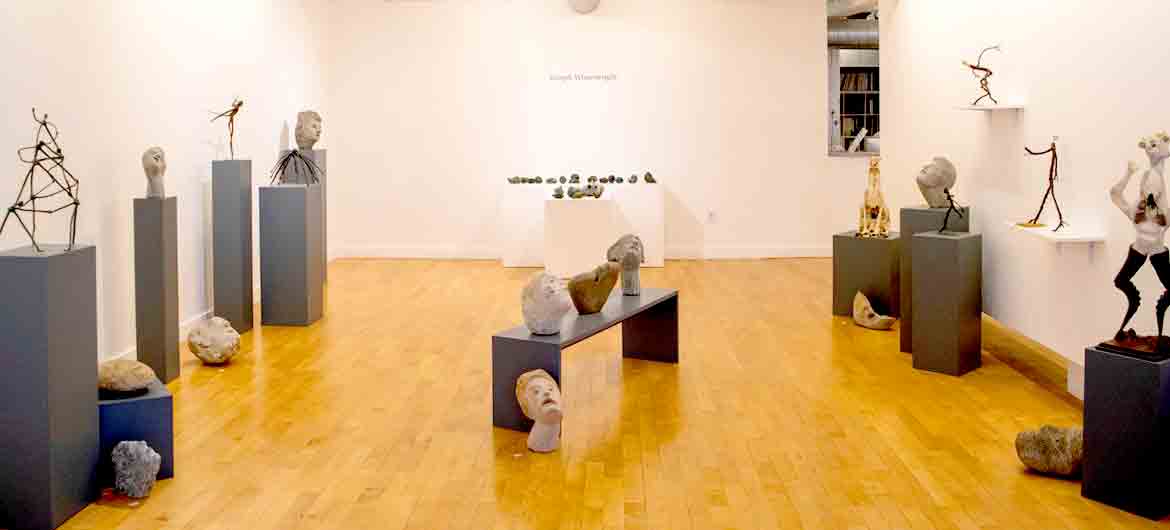Joseph Wheelwright’s sculptures originate in myths or fairy tales—crescent moons with dreamy faces; ancient personages that seem to emerge from within boulders; magical forest-people created from uprooted trees towering nearly 30 feet tall that bring to mind J. R. R. Tolkien’s Ents.
“Taking something that is inert and bringing it to life, that is the challenge to the artist,” Wheelwright told The Boston Globe in 1997. “I don’t stop until I feel a heartbeat in the stone.”
“Sticks, Stones & Bones”—at Gallery Kayafas in Boston from Dec. 6, 2019, to Jan. 18, 2020—is a survey of smaller work by the Dorchester sculptor who died from cancer in 2016 at age 68. He was buried in Vermont in a coffin crafted by his fraternal twin, George, then a woodworker in Rockport, Maine. The exhibition includes bronze moon-heads, characters assembled from sticks and bones, heads carved from stone.
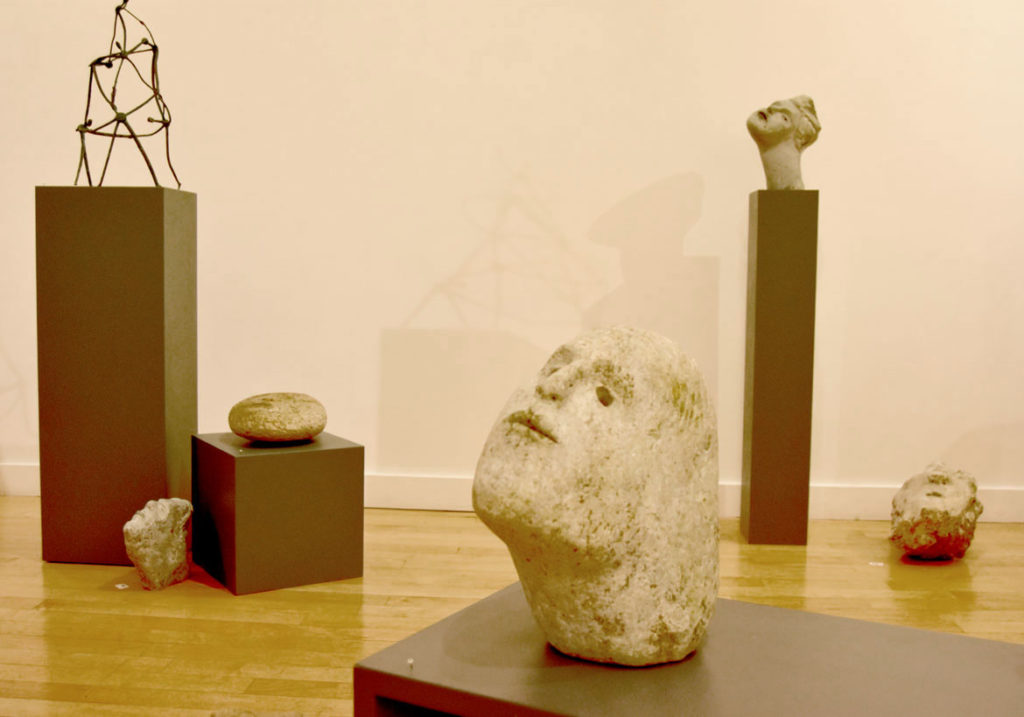
Wheelwright and his brother George, were born in New York City in 1948 and grew up in western Massachusetts, two of the six children of a Pittsfield physician. (His uncle was the naturalist and writer Peter Matthiessen.)
“I was the culture maven,” Wheelwright told the Globe in 1986. “I’d go to opera just to get to be with my mother. I made this drawing of Woody Woodpecker one day and my mother just shrieked with appreciation. She went right out and hired a private art teacher. I got a beret. I was all set.”
Wheelwright went to Yale University to study medicine, “but there was a problem. I was inept,” he told the Globe in 1986. (His roommate, “Doonesbury” creator Garry Trudeau, became a lifelong friend.) Wheelwright eventually switched to art, and went on to pursue graduate courses in sculpture at Rhode Island School of Design from which he earned a master’s degree in 1975.

Wheelwright’s art was rooted in his explorations for materials at beaches or in the woods of Vermont, where he and his wife Susan bought property in East Corinth in 1973.
“I began collecting things on my walks, anything that is beautiful, the reminds me of something, haunts me, or has an unusual color or texture—trees, bones, shells, stones, feathers, coral, seeds, snake skins, owl pellets, insect carcasses, galls, cones, bird nests, and so on,” he said for his 2003 exhibit “Stone Heads and Tree Figures” exhibit at deCordova Sculpture Park and Museum in Lincoln.
“One day I found this interesting root,” he told the Globe in 1986. “It had such a great shape that I incorporated it into a sculpture. I’ve been taking direction from found objects ever since.”
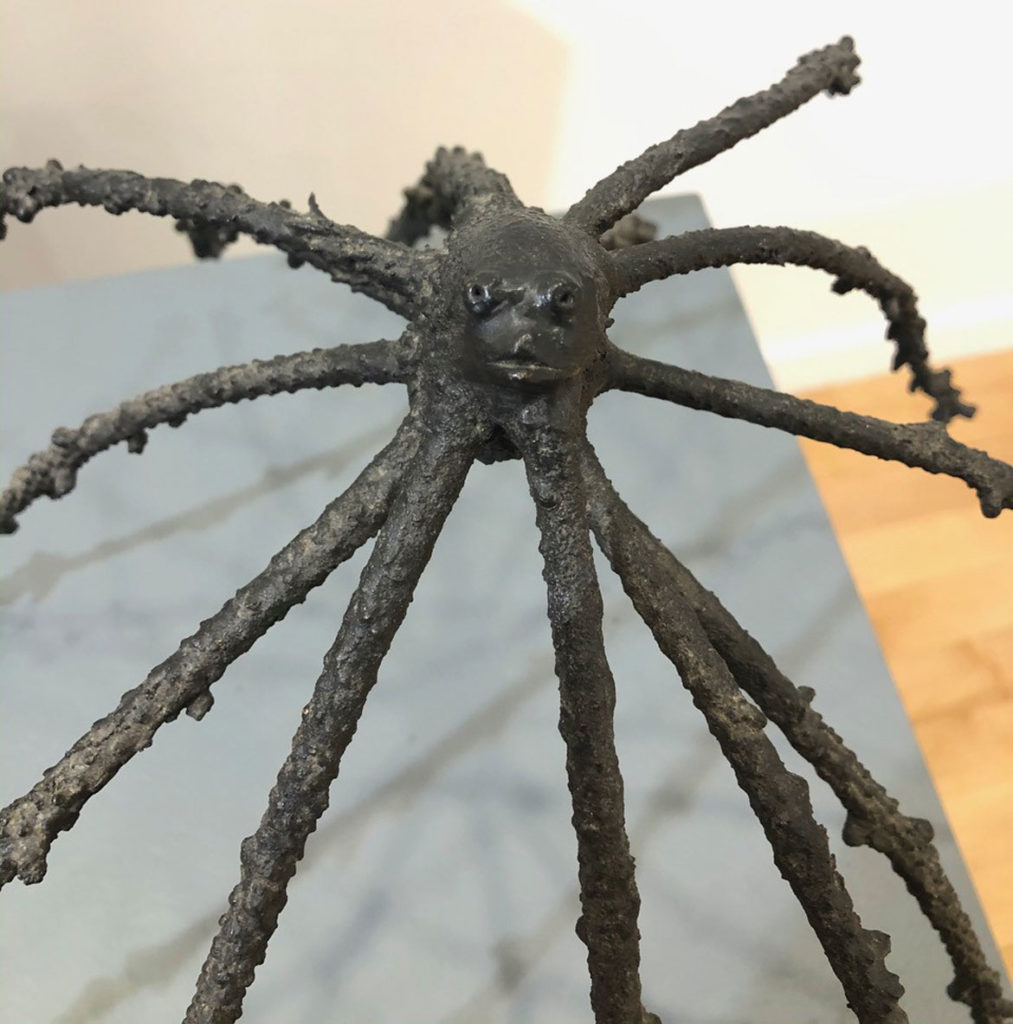
As his career developed, the scale of his sculptures grew, from sticks to trees. ”I start by looking for trees with bifurcated trunks” that could be reimagined as legs, he told The New York Times in 2011. ”If the hips and the swing of the legs look good, I poke down into the roots to see what the tree is going to give me for shoulders. Sometimes you can follow the root structure all the way out to the fingers.”
“The trees are just plucked out of the ground. I get a crane, turn them upside down, and work on them,” he told the Globe in 2003. “…Then what I do is spray foam into the root ball where the head should be. Then I carve it from the outside, and cover it with epoxy, and I upholster the head with bark.”
He felt a kinship with trees. “There’s no question that we are descended from the same organism,” told The New York times in 2011. ”You see it all the time: an armpit will form at the bottom of a branch; then it will mound like a shoulder. And many times I’ve seen fingers that seem to grow like a hand, with a spray of three or four, and then something thicker that heads down like a thumb. It’s quite astonishing.”

The birth of the first of Wheelwright’s two daughters inspired him to carve a small moon out of wax and cast it in bronze each year from 1981 until 2008. The whole set is part of the current Gallery Kayafas exhibition. His 2010 bronze “Sleeping Moon” slumbers in Dorchester’s Peabody Square near the Ashmont MBTA station.
“The moon, the original timepiece, seemed a good companion to the much-loved iron clock in Peabody Square,” he told The Dorchester Reporter before its dedication. He told The Boston Globe in 2006, “I think a lot of us still have a childlike or poetic curiosity about where the day sends the moon. Why can’t that place be Peabody Square?”
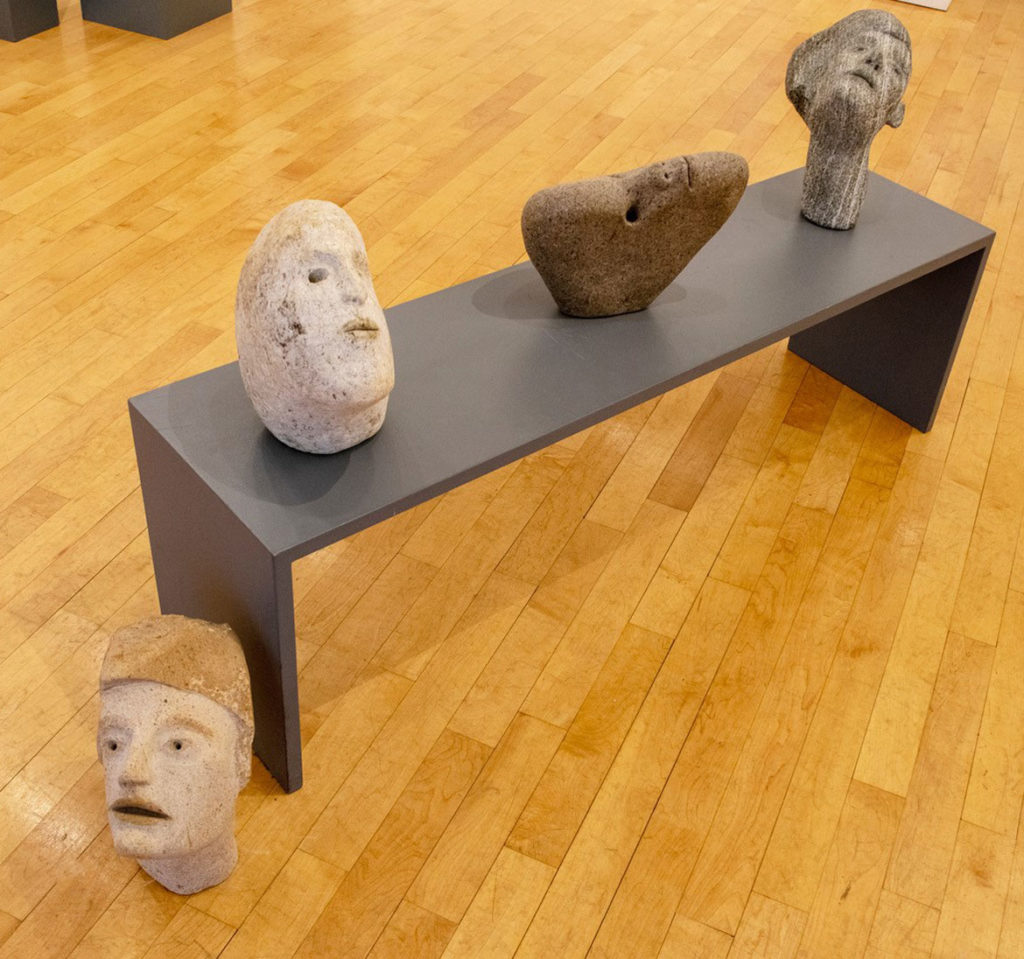
Wheelwright’s method was akin to seeing a face in the craters of the moon. “I don’t go through the travails of moving the rock unless I know where the face is,” he told the Globe in 2003. “They have to have the stubborn dignity of the human head, and rocks do. They’ve resisted this tremendous trip through glaciers, volcanoes, the ocean.”
Wheelwright’s other contributions to Boston included helping turn an abandoned dry-cleaning factory into Humphreys Street Studios, which debuted in 2003, and helping found Boston Sculptors Gallery, which was launched in the 1990s in former youth chapel at The Second Church in Newton, United Church of Christ, before it relocated to Harrison Avenue in Boston.
In the 1980s, Wheelwright chainsawed ice sculptures for Boston’s First Night. During that decade, he also worked with retired heart surgeon Howard Sirak to develop the “Wheel Right Land Glider” and “Street Shark,” three-wheeled skates that fit onto street shoes.
After New Hampshire’s iconic Old Man of the Mountain crumbled in 2003, he carved a head out of a 17-inch-tall chunk of granite as a model for his proposed replacement. He also schemed to have the Peruvian government allow him to carve a monumental head into the Andes. He told the Globe in 2014, “The world is ready for an eighth wonder of the world.” These last two proposals remained dreams.
Previously: Joseph Wheelwright at Boston Sculptors Gallery, Jan. 8, 2007.
If this is the kind of coverage of arts, cultures and activisms you appreciate, please support Wonderland by contributing to Wonderland on Patreon. And sign up for our free, weekly newsletter so that you don’t miss any of our reporting.
